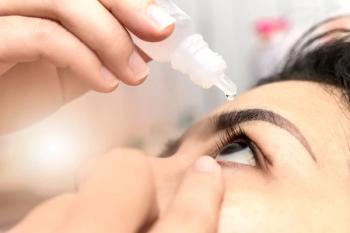
Contact lenses: Better compliance yields better comfort
Results from an observational study of patients wearing silicone hydrogel contact lenses showed that subjectively rated vision or comfort deteriorate during the day and toward the end of the wearing period.
Recommended replacement frequency also played a role, with results favoring patients who switched lenses just once a month compared with those on a 2-week replacement schedule, reported Kathryn A. Dumbleton, MSc, MCOptom, in a paper presented at the annual meeting of the American Academy of Optometry.
"We know that many patients are poorly compliant about changing their contact lenses according to the recommended replacement frequency. We were interested in investigating the role of compliance on the subjective comfort and vision of [SiH] lenses," said Dr. Dumbleton, senior clinical scientist, Centre for Contact Lens Research, University of Waterloo, Canada. "Our results suggest that clinical performance of these newer-generation contact lenses is enhanced by better compliance.
Assessing subjective performance
The data on comfort and vision were derived from a study designed for the primary objective of investigating compliance with replacement frequency. It enrolled 1,389 patients seen at 158 eye-care practitioners' offices, including 741 patients wearing 2-week replacement lenses and 648 patients in lenses with a 1-month replacement frequency.
During a routine office visit, patients were given a survey asking them to rate lens comfort and vision in the morning when they inserted their lenses and in the evening when they removed them. They also were asked to compare new lenses and ones that were ready to be replaced. The ratings were made on a scale of 0 (poor) to 10 (excellent).
"A possible limitation of our study was that patients were not given specific instructions on completing the survey. Furthermore, perhaps the simple rating scale we used was not an optimal tool for assessing subjective performance," Dr. Dumbleton said.
There were no significant differences between the 2-week and 1-month replacement frequency groups with regard to gender distribution, mean age, average number of days that lenses were worn per week, or the average hours worn per day.
Newsletter
Want more insights like this? Subscribe to Optometry Times and get clinical pearls and practice tips delivered straight to your inbox.
















































.png)


